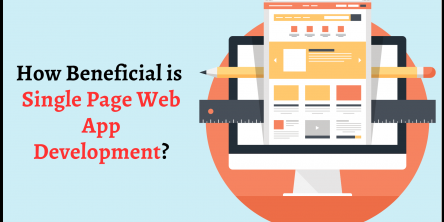Advantages of Blockchain in Charity

“There are 3 eras of currency: Commodity based, politically based, and now, math based.”
Chris Dixon, Co-founder of Hunch, now owned by eBay
“Blockchain: A ledger or a record that keeps track of any kind of data transaction on a network.” In layman's terms, blockchain is just a chain of blocks, yet not in the exact sense of those words. Blocks store digital pieces of information, all linked through codes to create a chain. This information could be monetary transactions, files, contacts–in short, anything that a user wants to share.
Blockchain technology has gained so much attention because of its potential across various sectors. It is a revolutionary technology as it makes networks more transparent and decentralized. With the rise in its usage, developers are now able to use it in different applications.
One sector particularly well-positioned to benefit is nonprofit fundraising. Nonprofits could manage, distribute, and track funds in a secure and faster way, look across borders, and much more. Let us take a look at how organizations could improve their fundraising measures with blockchain :
Added Security and Transparency
Blockchain verifies every transaction you make by forming a network of computers across the members. Therefore, no transaction can be carried out until and unless all the members of the network approve it. It will increase the security and transparency of the platform. All the members of the network will be able to access the information about where and how the donations are being used. Further, they could also keep track of donations in a much more organised manner.
Moreover, there is an additional feature–Smart Contracts, that could prove very helpful. These are self executing programs that can be associated with a block. Therefore, a lot of time consuming processes can be automated using this tool.
A wider audience
It is very difficult and time-consuming to transfer traditional currency from one country to another. Cryptocurrencies are non-geographic currencies. Charities could accept donations from anywhere in the world without any need to pay foreign exchange fees or consider currency exchange rates. Nonprofit organizations working in difficult parts of the world would also have massive benefits.
Better trackability of funds
Scandals have lessened the confidence in the charity sector, but blockchain and cryptocurrency could improve accountability.
With traditional measures, it can be difficult to verify progress on certain campaigns. However, with smart contracts on the blockchain, it can be ensured that funds are only released to an organization once they can prove their work is having an impact. Failure to meet certain targets could even result in donations being reimbursed.
Thus, blockchain would help fuel trust in this sector.
Connecting with the millennials
Millennials demand the use of technology. The new generation is also more likely to thoroughly research the charity or organization they donate to. A YouGov Survey found that half of those between 18-24 years of age prefer to donate using a crowdfunding platform, and about 40 percent of those between 18-35 years of age believe that only a small amount of their donation goes towards supporting the specific cause.
This presents an opportunity to offer a blockchain-based fundraising platform that is very compelling to a large audience of potential donors.
When people think of blockchain and cryptocurrency, they don’t typically think of philanthropy. However, these are emerging as a new fundraising vehicle. This is because nonprofit organizations face a lot of scrutiny due to a lack of transparency, accountability, and limited ways of accepting donations. Blockchain could resolve many such problems. Building applications that can show people how the money flows through your organization would definitely help your nonprofit fundraising.
Similar Articles
Discover how niche hobby communities thrive online, connecting enthusiasts through platforms like Reddit and Discord. Explore shared passions & resources today!
The current business environment and the mind boggling pace at which continues to evolve has been for everyone to see. But what many may not realise is that this change has made effective communication with potential customers more important than ever.
In today's digital content landscape, creators are constantly seeking ways to make their productions more engaging, relatable, and authentic.
With the advancement of technology, goods are now being produced at an enormous rate and in diverse regions throughout the globe, which has transformed industries.
Discover how industrial printer ink differs from regular ink—durability, high-volume performance, and cost-efficiency for B2B printing needs.
Atomic Absorption Spectroscopy (AAS) is applied in fields like healthcare, food safety, and pharmaceuticals.
Modern businesses have come to rely on technological infrastructure, and quite heavily at that, no? Everyone can see the growing dependence of all industries on digital solutions to go about their operations. However, the complexity of modern business is beginning to necessitate the kind of technological solutions that can scale with changing requirements
Digital technologies and the transformation they have brought about have fundamentally altered how businesses operate. This has resulted in an increase in data generation and the adoption of various software, among other things
Users today are pickier than ever. They want their needs met with a few clicks or taps on the screen. Failure to meet their needs results in site abandonment, which is not a positive sign for a business aiming to be successful. The traditional way of information sharing through websites requires a reload for every action a user performs.









